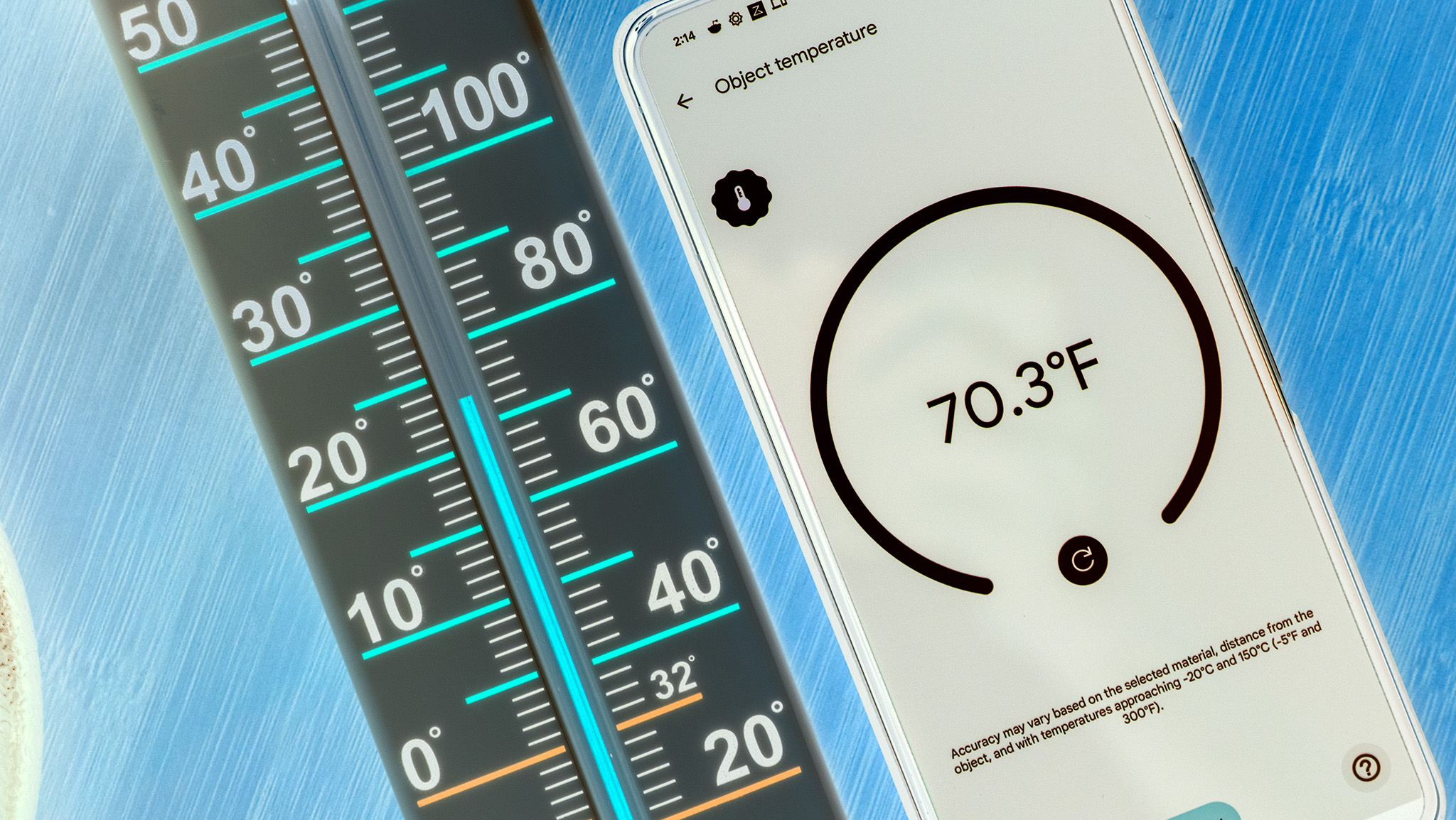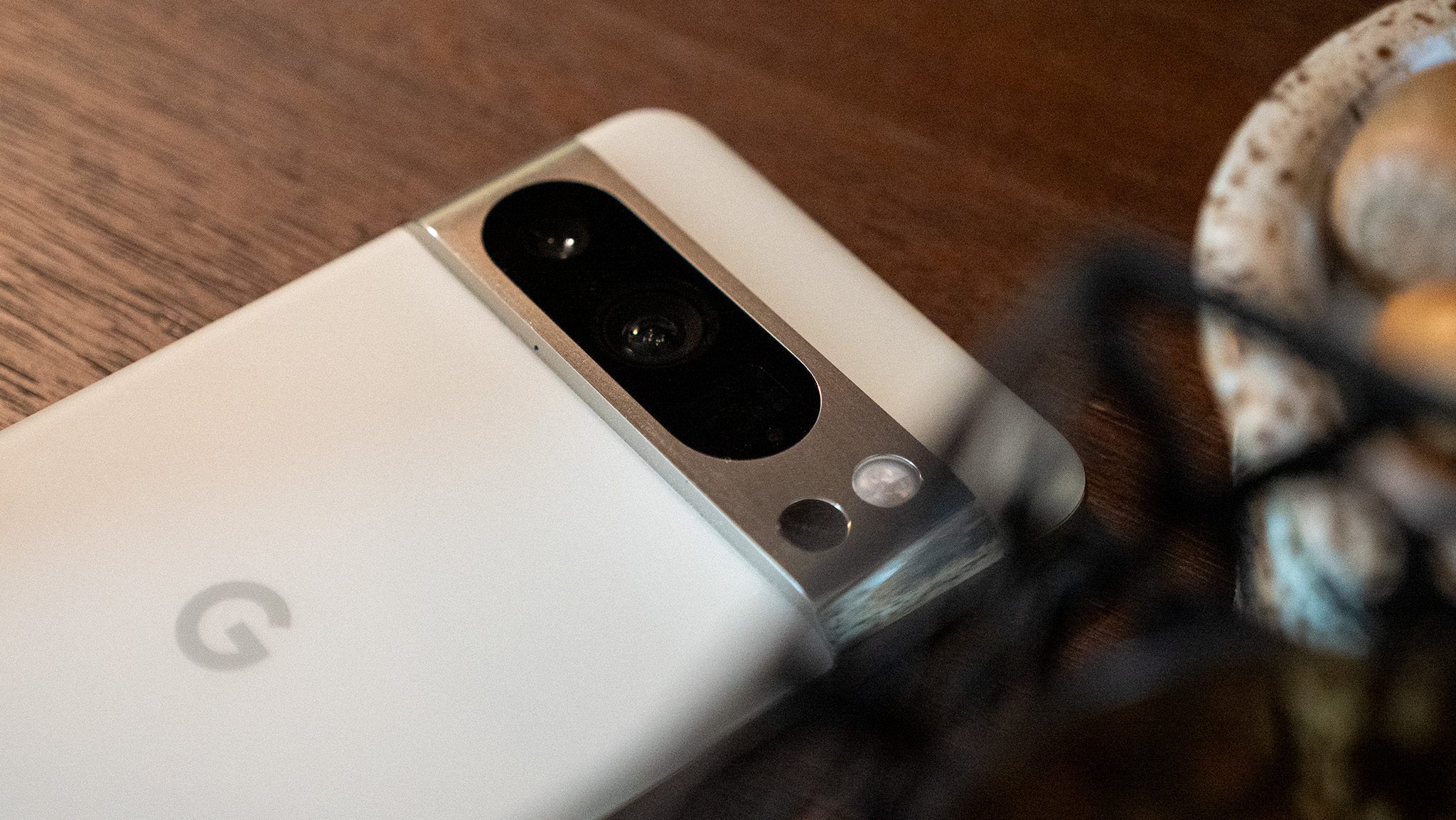Here's how the Pixel 8 Pro's FDA-cleared body temperature sensor works
Your smartphone can now tell if you have a fever.

What you need to know
- In the January Pixel feature drop, Google added body temperature sensing to the Pixel 8 Pro.
- Clinical trials revealed that the Pixel 8 Pro could successfully calculate body temperatures between 96.9°F - 104°F to within a margin of error of ±0.54°F.
- The successful performance earned FDA De Novo classification for the body temperature app.
Ever wonder if you or your loved one is suffering from a fever? If you have a Pixel 8 Pro, now you can find out with a surprising degree of accuracy using only your smartphone. The infrared sensor on the Pixel 8 Pro can now be used for body temperature readings following the January Pixel feature drop.
Originally, Google said that the infrared sensor should only be used for reading the temperatures of objects. That was when the Pixel 8 Pro first came out last October. Since then, Google has earned certification from the U.S. Food and Drug Administration for its body temperature app and thus brought the feature to Pixel 8 Pro phones.
Google explained in a press release Thursday how the temperature sensor works and how it earned the FDA's De Novo classification. It's a milestone because Google's Pixel 8 Pro is the first smartphone to earn such classification for a body temperature sensing app.
When you want to record your temperature on Pixel 8 Pro, the process is painless. Google says that you should point your phone's rear camera at your forehead and sweep across it. This sweeping motion is used to pinpoint the temperature of your temporal artery rather than just the center of your forehead. Of course, the process can also work by pointing the Pixel 8 Pro's infrared sensor at someone else's forehead.

Google notes that it's best to use the Pixel 8 Pro close to the person's forehead in order to get an accurate reading. “It’s basically a big cone that the sensor takes in,” said Ravi Narasimhan, a research and development technical lead at Google, in the press release. “Arteries are relatively small, so the closer you are, the more accurate reading you will get.”
It's easy to know if you're taking temperature readings correctly. Google is using the LDAF sensor in the Pixel 8 Pro to see if the phone is close enough to the subject. Then, it will give users haptic and audio cues to let them know how to conduct the sweeping motion.
This is important because when done correctly, the Pixel 8 Pro's temperature readings are very accurate. Clinical trials revealed that the Pixel 8 Pro could successfully calculate body temperatures between 96.9°F and 104°F to within a margin of error of ±0.54°F. Google says that these results put the Pixel 8 Pro in the same territory as other temporal artery thermometers in terms of accuracy.
Be an expert in 5 minutes
Get the latest news from Android Central, your trusted companion in the world of Android
The body temperature detection feature on the Pixel 8 Pro is a seriously cool feature because you will essentially have a thermometer with you everywhere you go. Not many people bring a thermometer with them daily, and even at-home thermometers are usually used so infrequently that they can get lost when you need them most.
Having an FDA-cleared thermometer in your pocket is an advantage that Pixel 8 Pro owners have over other Android phones.

The newest Google flagship
Aside from sporting stock Android and featuring many AI features, the Google Pixel 8 Pro is the only smartphone to offer a body temperature sensor. For that reason and more, the Pixel 8 Pro is one of the best phones of the year.

Brady is a tech journalist for Android Central, with a focus on news, phones, tablets, audio, wearables, and software. He has spent the last three years reporting and commenting on all things related to consumer technology for various publications. Brady graduated from St. John's University with a bachelor's degree in journalism. His work has been published in XDA, Android Police, Tech Advisor, iMore, Screen Rant, and Android Headlines. When he isn't experimenting with the latest tech, you can find Brady running or watching Big East basketball.